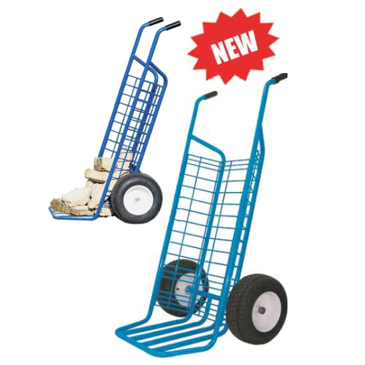Hand trowels come in many different sizes and shapes, so it's important to choose a size and shape that's right for the job at hand. Some small trowels have serrated edges that can be used to cut through stubborn weeds or roots. Others have a curved blade that can be used to scoop up soil or compost.
Whichever type of hand trowel you choose, make sure it is comfortable to use and has a sharp blade to easily accomplish your gardening tasks. For taking benefits about the usage of the trowel you also have to know about the maintenance of hand trowel keeping it long time.
What are the uses of hand trowel?
1. Breaking up soil: The hand trowel is the perfect tool for breaking up soil in a small area, such as a flower bed or vegetable garden. The sharp blade makes light work of any clods of soil, and you can create a smooth, flat surface with a small trowel.
2. Removing weeds: Garden trowels can also be used for removal Whether you are an experienced gardener or just starting out, having a good hand with a small trowel is vital to your success in the garden.
This simple tool makes it easy to create the perfect hole for planting seeds or seedlings, transplanting mature plants, and digging out pesky weeds.
3. Transplanting plants: In addition to breaking up soil and removing weeds, hand trowels can be used to transplant plants. If you have an existing garden bed with larger plants growing in it, you can use a hand shovel to gently dig around each plant and lift them out.
Whether you're moving an existing plant to a new location in your garden or simply repotting it into a larger container, the hand trowel's sharp blade will get the job done quickly.
4. Applying fertilizer or compost: Another great use for a hand trowel is to apply fertilizer or compost to your garden beds. Instead of trying to spread this fertilizer evenly by hand, simply scoop up a trowel and use a small trowel to distribute it more evenly over the surface of the soil.
5. Create furrows for seeds: When planting new seedlings or direct seeding, it can be helpful to use a small trowel to make furrows in the soil. This will space the plants evenly and ensure they get the right amount of sunlight, water and nutrients.
To summarize, the main uses of hand trowels include breaking up compacted soil, digging holes for planting new plants, weeding and cultivating the soil, and removing unwanted weeds and grass from around existing plants.
In addition to these basic functions, many gardeners use the trowel to apply compost or fertilizer to the soil, or to move plants from one location to another.
When choosing a hand trowel, it is important to consider the size and shape of the blade, as well as the overall weight and construction of the tool. For example, someone with small hands may prefer a short, narrow trowel, while someone with large hands may find a wide, long trowel more comfortable to use.
The weight of the trowel is also important, as heavier tools may be more difficult to control, especially when digging in hard or compacted soil.
Conclusion
Whether you are a gardener, a farmer or a gardening enthusiast, garden trowels are essential tools for your work. There are many useful uses for this tool, and by understanding its different uses and how to best utilize this handy gardening tool, you can make your job easier and more efficient.
At GarDepot, you can find almost a full range of gardening tools and equipment. We also offer guidance for gardeners on the various tools available. Feel free to visit our website to learn more.



.jpg)



